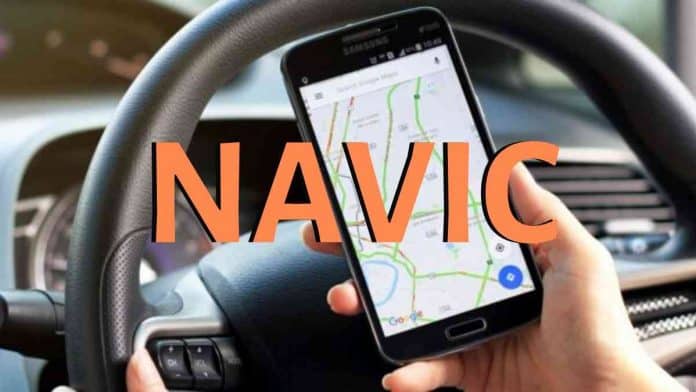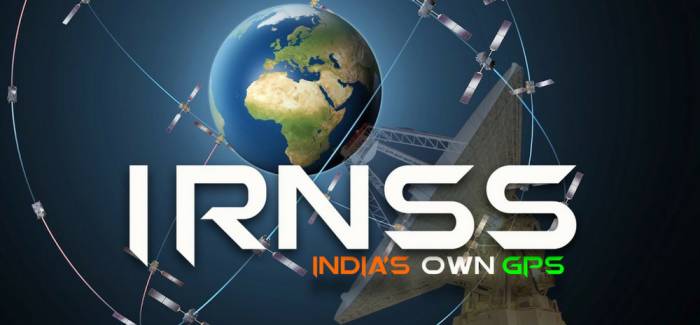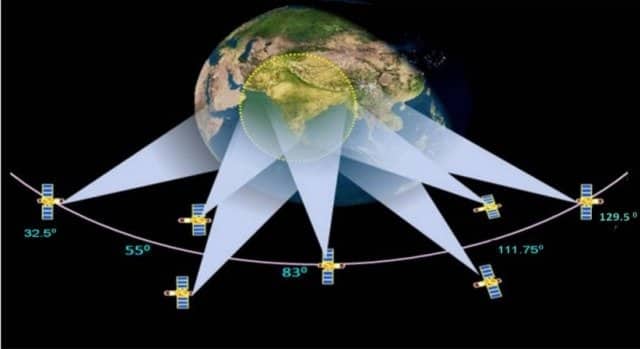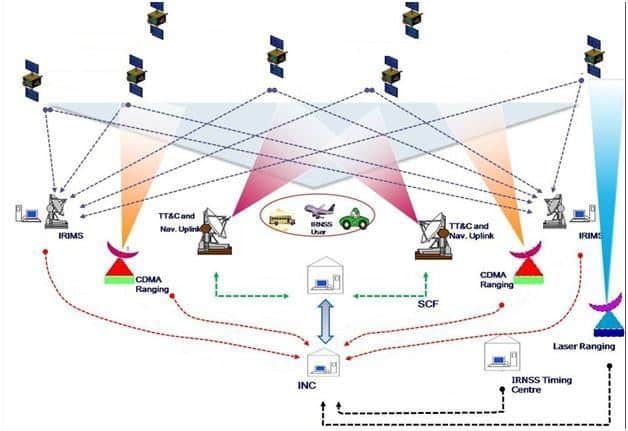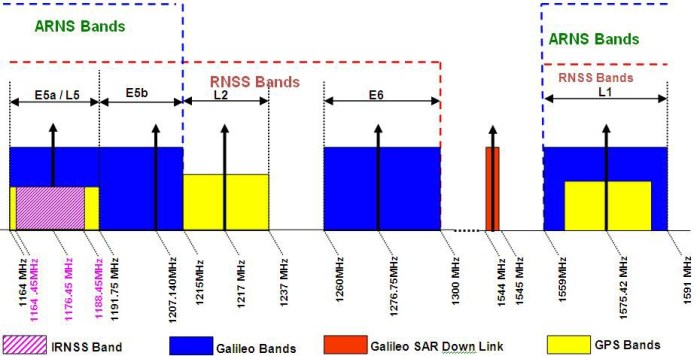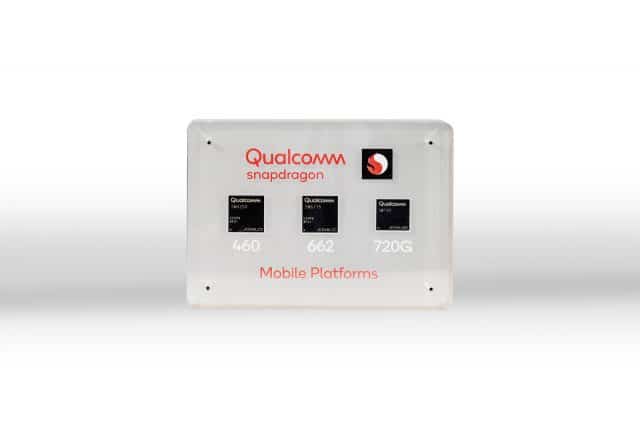As you might know, GPS (Global Positioning System) and GLONASS (GLObal NAvigation Satellite System) are the two conventional global navigation satellite systems. The former is owned by the United States Government and operated by the United States Space Force while the later is owned and operated by the Russian Federation.
As their names suggest, these two navigational systems offer global coverage, and their precision is excellent. After around seven years of rigorous development and testing, India has finally developed its own satellite navigation system known as NavIC.
In this article, we have shared every bit of information that you need to know about NavIC. Additionally, we have even compared NavIC to the good old GPS. Lastly, at the end of this article, there’s a small list of smartphones and mobile processors that support NaVIC.
Table Of Contents
Navigation with Indian Constellation or often shortened as NavIC is an autonomous regional satellite navigation system that provides accurate real-time positioning and timing services. Presently, NavIC covers India and a region extending 1,500 KM around it.
The coverage area of NavIC is expected to increase in the upcoming years. The name of the project behind NavIC is IRNSS which elaborates to Indian Regional Navigation Satellite System.
NavIC is operated by ISRO and it presently consists of a constellation of seven satellites, coupled with two additional satellites on the ground as stand-by. ISRO might expand the NavIC system by incrementing its constellation size from 7 to 11.
According to ISRO, NavIC will be available for both military and commercial usage. As a result, civilians can use NavIC on their smartphones, fitness bands, and vehicles.
Unlike, GPS and GLONASS which are two mainstream global tracking systems, NavIC is dedicated to India and some of its adjoining regions. In addition to India, many other countries like China and Europe have regional navigation systems. The total cost of development for this project is around 22.46 billion or roughly US$315 million.
As mentioned above, NavIC consists of a constellation of seven satellites that are roughly at an altitude of 35,000 KM from the earth’s surface and are in direct line of sight with India. These satellites rotate around earth at a fixed velocity which helps them to maintain a perfect line of sight.
All seven of these satellites consist of three Rubidium Atomic clocks. Well, the rubidium atomic clock is a frequency standard in which a specified hyperfine transition of electrons in rubidium-87 atoms is used to control the output frequency. In simple words, a Rubidium Atomic clock is a device that is installed on satellites which helps them to calculate the distance, time, and precise position using radio frequencies.
Later the data collected by the satellites is transferred to civilians and the military. It is worth noting that, NavIC satellites use dual frequency bands namely L5-band and S-band. The L5 frequency is used to locate devices like smartphones, fitness trackers and commercial vehicles.
On the other hand, the S-band frequency is dedicated to military use and it is encrypted.
Some of the major differences between NavIC and GPS are
- Both GPS and NavIC are navigation satellite systems. However, Global Positioning System tracks the entire globe while NavIC is limited to India.
- Thanks to India’s Geostationary satellites that are situated in a much higher orbit and use dual frequency bands (L5-band and S-band) the accuracy of NavIC is better than that of GPS. Additionally, the signal on NavIC is less prone to obstructions.
- GPS relies on 31 operational satellites for its proper functioning. On the other hand, NavIC relies on just 7 satellites in earth’s orbit.
- NavIC satellites use dual frequency bands (L5-band and S-band) while GPS still uses single frequency band.
- GPS is supported on every single smartphone in existence while NavIC is a newly developed technology.
Presently NavIC consists of eight satellites namely IRNSS-1A, IRNSS-1B, IRNSS-1C, IRNSS-1D, IRNSS-1E, IRNSS-1F, IRNSS-1G, IRNSS-1I.
Sadly, the atomic clock of the first satellite, IRNSS 1A, became defective. In order to fix it, ISRO decided to launch IRNSS 1H, which was unsuccessful when the PSLV-C39 mission failed. Lastly, the second standby satellite, IRNSS 1I was launched and it finally replaced IRNSS 1A and completed the constellation of NavIC.
Furthermore, in order to avoid the above-mentioned issue in satellites, ISRO is using only one Atomic clock and keeping the other two clocks as backups. As of now, NavIC is working completely fine and it’s providing accurate data.
As you might have understood by now, NavIC is presently a newly developed technology and it will take quite some time for it to become mainstream. Recently, Qualcomm and Indian Space Research Organisation have signed an agreement in order to make NavIC available for civilian use via smartphones.
Qualcomm has released many NavIC compatible chipsets since then. For instance, Snapdragon 865, Snapdragon 765, Snapdragon 720G, Snapdragon 662, and Snapdragon 460 are some of the recently announced mobile processors that will support NavIC.
The powerful Qualcomm chipsets mentioned above will sport single-frequency receivers which can track the L5 band. Later dual-frequency receivers will also be added to the upcoming processors and these processors will be capable of tracking L5 and S-band for higher accuracy.
The two famous smartphone brands that have either announced or launched NavIC compatible smartphones are Xiaomi and Realme.
Smartphones with NavIC support 2020:
- Realme X50 Pro 5G
- Redmi Note 9 Pro (upcoming)
- Realme 6 Pro
Most likely, we can expect more and more NavIC-enabled smartphones to be compatible with NavIC in the upcoming years.
No, it’s impossible to get NavIC support on older smartphones as it uses a different frequency band. It is worth noting that, NavIC is a hardware-oriented feature of a smartphone and the frequency receivers for NavIC are integrated within the processor. As a result, it’s impossible to get NacIC on older phones via OTA update.
CONCLUSION
So this was all about one of the upcoming GPS alternative NavIC. Do share any of your personal thoughts and opinions on NavIC in the comments section below.
